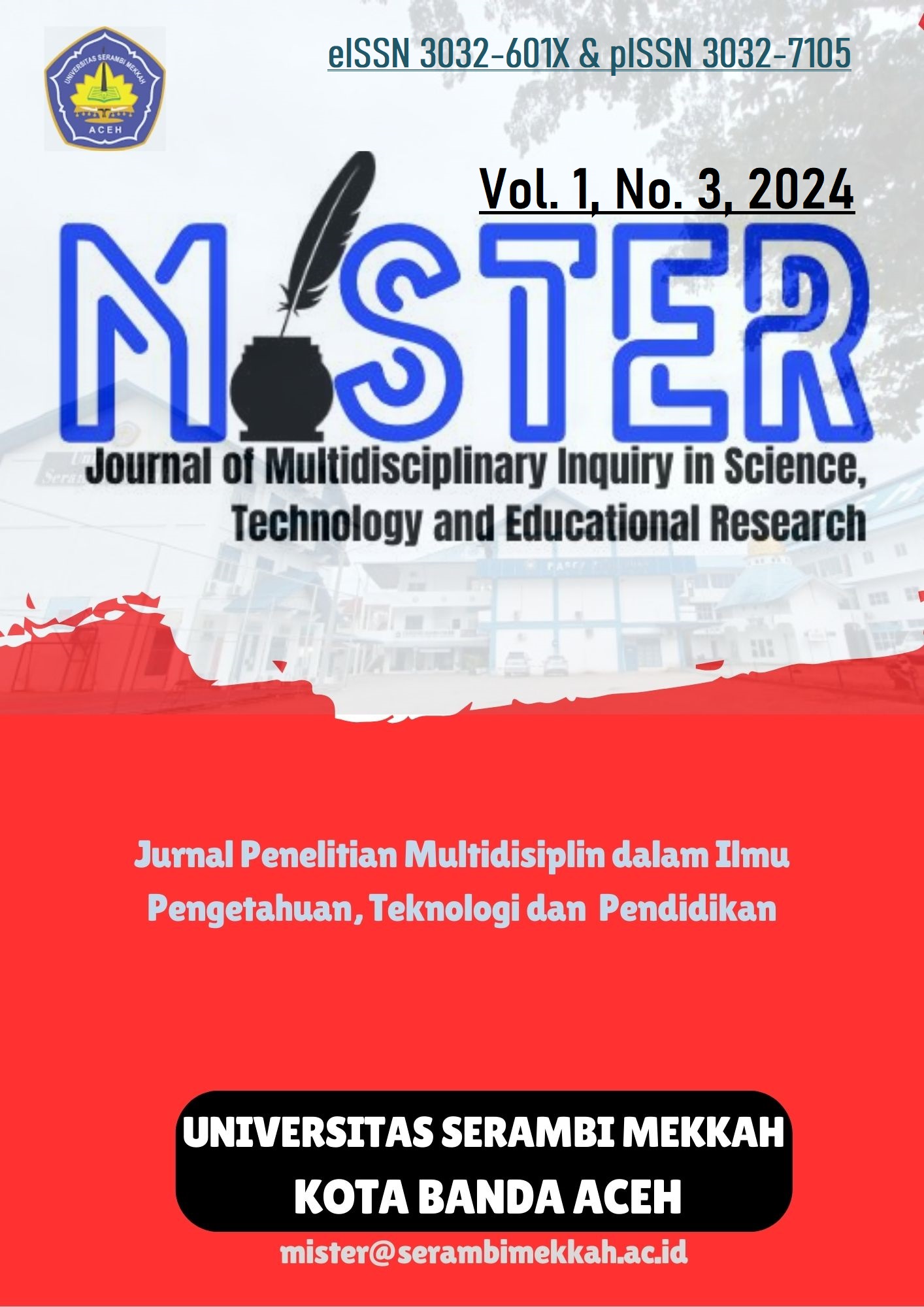Mengkaji Faktor dan Kesan Pendedahan Pornografi dalam Kalangan Pelajar Sekolah di Perlis yang Mengikuti Program Intervensi Tentang Bahaya Pornografi
Main Article Content
Abstract
Malaysia boasts the highest number of IP addresses dedicated to uploading and downloading child pornography in Southeast Asia, as highlighted by Assistant Commissioner Ong Chin Lan during the "Cyber Protection for Children" seminar in 2018. This revelation spurred researchers to deliver intervention lectures on the perils of pornography across various schools in Perlis. In total, 1191 questionnaires were dispersed among students to explore the factors and impacts of their exposure to pornography and gauge their response to the lectures. Analysis of the questionnaire data using SPSS 2.2 software revealed that 80.6% of students were engaged with pornography, with 43.6% accessing it via the internet/pop-ups, 24.5% through television/movies, and the remainder from magazines/anime and smartphone applications. Most students admitted to consuming pornographic material alone, attributing their behavior to curiosity and arousal. Consequently, researchers emphasize the importance of proactive parental monitoring and advocate for schools to collaborate with relevant stakeholders in organizing additional intervention programs. Such initiatives aim to mitigate students' exposure to pornography and counteract its adverse effects effectively.
Article Details

This work is licensed under a Creative Commons Attribution-ShareAlike 4.0 International License.
References
Amirul Ashraaf Norman & Nooraini Othman. (2020). Ketagihan Pornografi dalam Kalangan Remaja: Faktor dan Implikasi Terhadap Sahsiah Diri Remaja. Jurnal Melayu, 19(2), 205.
Baxtor, A. (2014). How Pornography Harms Children: The Advocate’s Role. (Artikel web). Diakses di https://docplayer.net/81943233-How-pornography-harms-children-the-advocate-s-role-by-allison-baxter.html.
Budiyati, E. (2023). Pengaruh Konsep Diri Sebagai Prediktor Kesehatan Mental Mahasiswa. LANCAH: Jurnal Inovasi Dan Tren, 1(2), 233~238
Emily F. Rothman, et al. (2018). A Qualitative Study of what US Parents Says and Do When Their Yound Children See Pornography. (Artikel web). Diakses di https://www.researchgate.net/publication/316447516_A_Qualitative_Study_of_What_US_Parents_Say_and_Do_When_Their_Young_Children_See_Pornography
Flood, Michael. (2009). The Harms of Pornography Exposure among Children and Young People. (Artikel web). Diakses di https://onlinelibrary.wiley.com/doi/10.1002/car.1092
Galih Haidar, Nurliana Cipta Apsari. (2020). Pornografi pada Kalangan Remaja. Prosiding Penelitian & Pengabdian Kepada Masyarakat, 7(1), 136 – 143.
Kabali, H. K., Irigoyen, M. M., Nunez-Davis, R., Budacki, J. G., Mohanty, S. H., Leister, K. P., & Bonner, R. L. (2015). Exposure and Use of Mobile Media Devices by Young Children. Pediatrics, 136(6), 1044–1050.
Khotmi, N., & Dita Pebriana. (2023). Peran Regulasi Emosi Terhadap Kenakalan Remaja di Dasan Erot Kelurahan Kembang Sari. LANCAH: Jurnal Inovasi Dan Tren, 1(2), 164–168.
Louis Leung, Cheng Chen. (2018). A Review of Media Addiction Research From 1991 to 2016. (Artikel web). Diakses di https://journals.sagepub.com/doi/abs/10.1177/0894439318791770#tab-contributors
L. David Perry. (2016). The Impact of Pornography on Children. (Artikel web). Diakses di https://iastate.pressbooks.pub/app/uploads/sites/29/2020/07/The-Impact-of-Pornography-on-Children.pdf
MCCA. (2022). Lebih 100,000 IP Berdaftar Di Malaysia Terbabit Pornografi Kanak-Kanak. (Artikel web). Diakses di cyberconsumer.my/lebih-100000-ip-berdaftar-di-malaysia-terbabit-pornografi-kanak-kanak
Jessica Migala, Neydeline Mejia (2023). If Your Partner Holds Your Hand with ~Two~ Hands, They’re in It for the Long Haul. Women’s Health. (Artikel web). Diakses di www.womenshealthmag.com/relationships/a30243732/holding-hands/
Noor Azimah Muhammad. (2023). 75 Peratus Remaja Malaysia Tonton Video dan Gambar Lucah. (Artikel web). Diakses di https://www.ukm.my/beritaukm/75-peratus-remaja-malaysia-tonton-video-dan-gambar-lucah/ .
Peter, J., & Valkenburg, P. M. (2008). Adolescents’ Exposure to Sexually Explicit Internet Material, Sexual Uncertainty, and Attitudes Toward Uncommitted Sexual Exploration. Communication Research, 35(5), 579–601.
Ybarra, Michele L., and Kimberly J. Mitchell. (2005). Exposure to Internet Pornography among Children and Adolescents: A National Survey. Cyberpsychology & Behavior, 8(5), 473–486.
Thanuseeyah, Hilwa et al. (2020). Hubungan antara Ketagihan Pornografi dan Jenis Trait Personaliti dalam Kalangan Remaja. Jurnal Wacana Sarjana, 4(2), 1-9.
Tsitsika, A., Critselis, E., Kormas, G., Filippopoulou, A., Tounissidou, D., Freskou, A., Spiliopoulou, T., Louizou, A., Konstantoulaki, E., & Kafetzis, D. (2008). Internet Use and Misuse: A Multivariate Regression Analysis of the Predictive Factors of Internet Use Among Greek Adolescents. European Journal of Pediatrics, 168(6), 655–665.
Wright, P. J., & Donnerstein, E. I. (2014). Sex Online: Pornography, Sexual Solicitation and Sexting. Adolescent Medicine: State of The Art Reviews, 25(3), 574–589.
